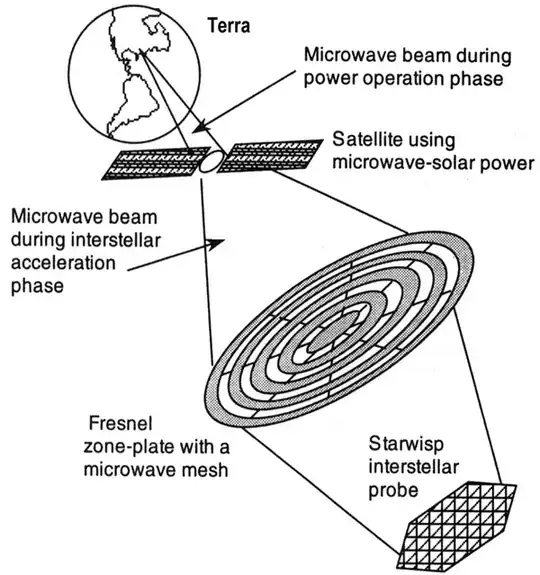I am familiar with the inverse-square law and how detrimental it will be to the power of radio signals as they advance outwards in space. Assume we have two (or why not more?) interstellar colonies, relatively nearby one another—eg. Sol and Proxima—in desperate need to transmit millions of terabytes (petabytes? exabytes? potentially a lot more) of information reliably, per second.
What kind of energy output would we be looking at? My initial solution was to create some mythical device that could alter the wavelength or frequency of the starlight at the sender star system just enough so that the receiver star system could pick it up. However, this seems like an immense build even for our advanced culture, and I'm not sold that it would work at all.
My second solution was to build many, many, many lasers which would transmit said information. I don't know much about the range of lasers, and I'm fairly certain that even though the photons are ~parallel, they are subject to the inverse-square law, and thus degrade over distance.
In essence, What method(s) should an advanced, interstellar culture employ to exchange millions of terabytes per second with a neighboring star system, and what would the energy bill look like?
Edit: I am looking for EM-based methods, ones that would not require relays (which themselves could require maintenance or repairs). I am also looking for a most scientific answer. One that conforms to our current understanding of science. Small latencies are not an issue, given that the information will be traveling several light-years, however, as I've said, I'd like for the method to be primarily EM-based.
